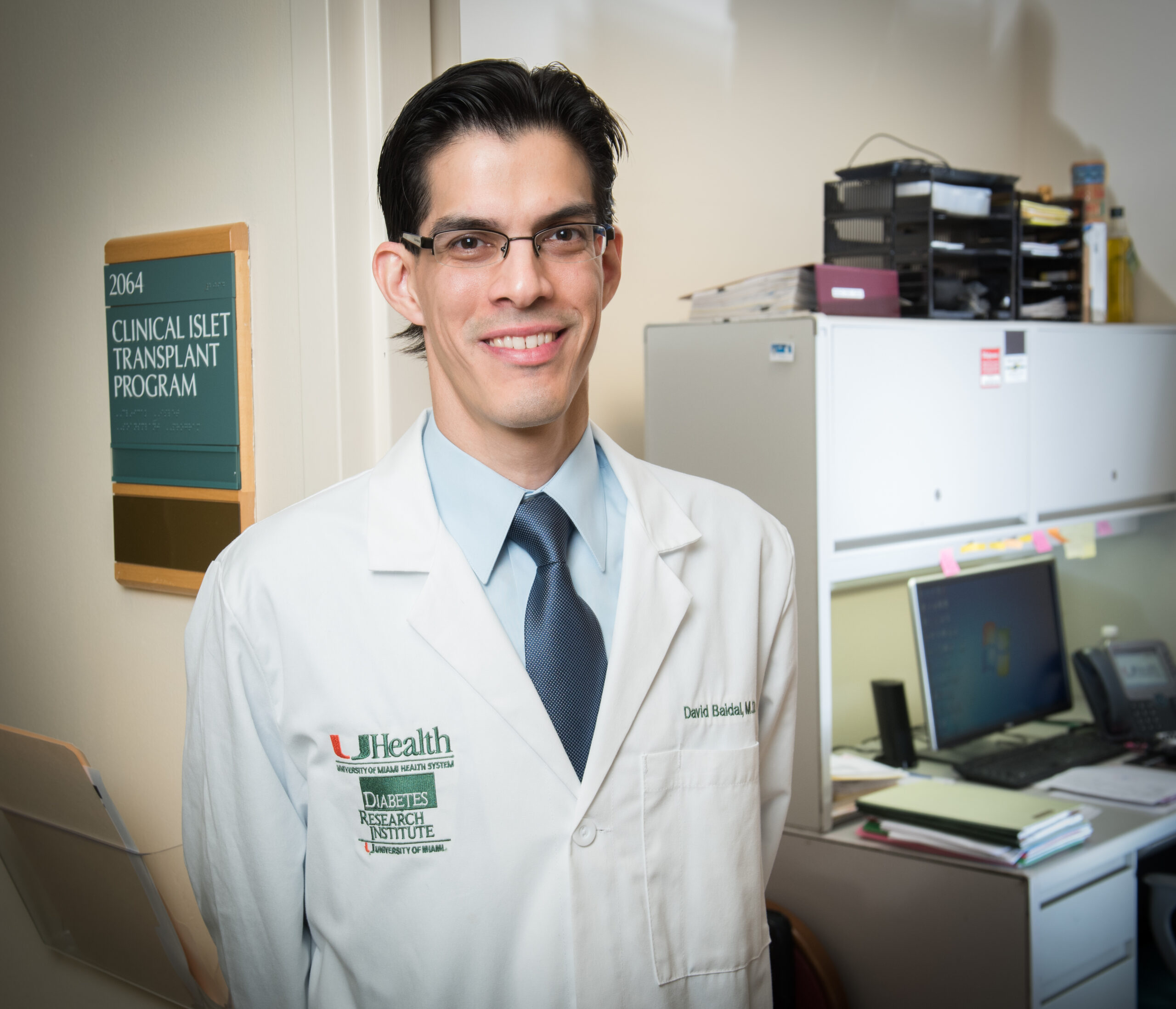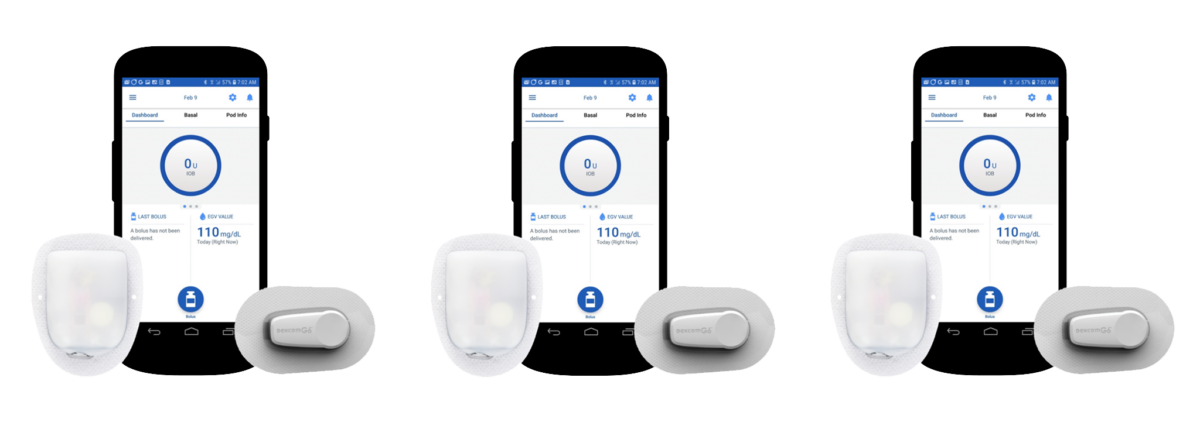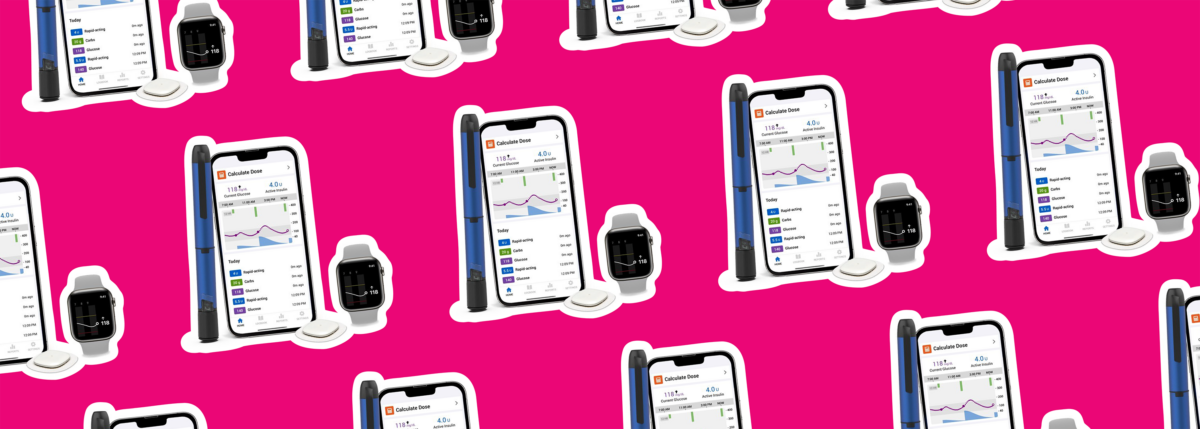Is a New Transplant Site the Key to a Type 1 Cure?
Written by: Beyond Type 1 Editorial Team
2 minute read
January 26, 2018
Beyond Type 1 is proud to partner with Diabetes Research Connection to accelerate the most promising efforts for a cure for type 1 diabetes. Diabetes Research Connection connects donors directly with scientists, enabling researchers to perform peer-reviewed, novel research designed to prevent + cure type 1 diabetes.
This piece highlights one of many projects we’re excited to help move forward. Through DRC, you can fund this project directly! Gifts start at $1 and 100 percent of your funds designated for research go directly to the lab. To date, $7,952 of a necessary $50,000 has been raised to move forward with this idea.
Learn more about Diabetes Research Connection—The Idea Factory—Powered by You

Researcher: David Baidal, M.D.—Diabetes Research Institute
Have you heard about the handful of Diabetes Research Institute (DRI) patients that went without insulin for 10 years after cell replacement therapy? Their results showed that we can restore insulin production in those with type 1 diabetes and that a biological cure is possible.
This treatment is not available (yet) to the millions with diabetes. While it was effective for some and improved their quality of life, the issue of cell survival and need for immunosuppressants post-transplant remains. Can a new location for the islet cell BioHub or “mini-organ” remedy these issues? The liver, the site used previously, has an adequate blood supply and is an easy-to-access location; however, it is the body’s filter for toxins, so the cells are exposed to waste, which decreases their longevity.
Scientists believe that there may be a better location for cell replacement therapy: the omentum, a layer of fatty tissue that covers the organs in the lower abdomen. Like the liver, it’s close to the surface and is also highly vascularized. The big difference is it isn’t surrounded by waste and has an even larger surface area for scientists to work with.
DRI says there have been “encouraging preliminary results in animal models have demonstrated that islets in the omentum can engraft (become lodged in the tissue, get their own vessels and start producing insulin) and improve blood glucose control.”
With approval from the FDA, a new clinical trial is now underway in humans.
The Clinical Trail
The DRI BioHub is a bioengineered mini-organ designed to mimic the pancreas. “The islets are transplanted within a fully-resorbable (biodegradable) biologic scaffold consisting of the patient’s plasma (the liquid part of the blood that does not contain cells) and human thrombin, a clotting enzyme commonly used in surgical procedures,” explains DRC.
“The biologic scaffold will serve as a platform that adheres to the omentum and holds the islets in place. The patients in this clinical trial will require the same immunosuppressive (anti-rejection) drug regimen as used in islet transplants within the liver. However, our goal at the DRI is to eliminate the need for these drugs. The development of the DRI BioHub, together with several other areas of research strategies underway at the Institute, are aimed at overcoming challenges of the immune system.”
Through Diabetes Research Connection, you can fund this project directly! Researchers have raised $8,000 of a necessary $50,000 to move forward with this idea. Let’s make it happen.
Learn more about Diabetes Research Connection—The Idea Factory—Powered by You

Author
Beyond Type 1 Editorial Team
Beyond Type 1 is the largest diabetes org online, funding advocacy, education and cure research. Find industry news, inspirational stories and practical help. Join the 1M+ strong community and discover what it means to #LiveBeyond a diabetes diagnosis.
Related Resources

Already compatible with Dexcom’s G6 and G7 continuous glucose monitors (CGMs), the Omnipod 5 Automated...
Read more

The younger a person is diagnosed with type 2 diabetes, especially those with obesity, the...
Read more

The Oura Ring, which tracks things like sleep, heart rate, and activity, is joining forces...
Read more

